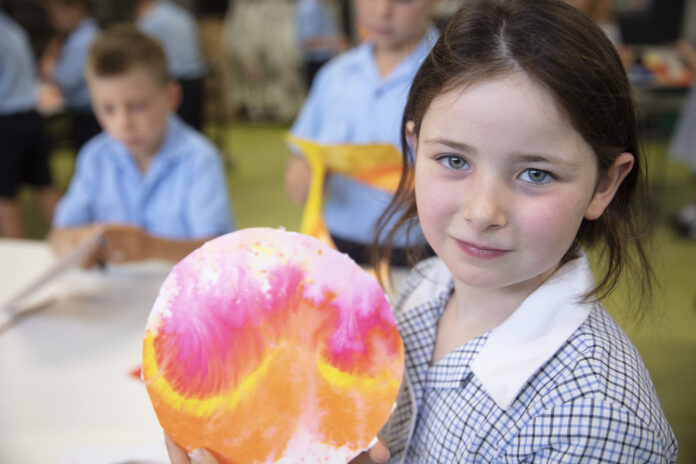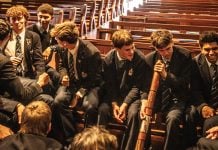Another round of off-campus learning in Term III presented new challenges, particularly in areas where purpose-built facilities are an integral part of the classroom experience. But for Melbourne Grammar’s Visual Art teachers, ongoing restrictions also offered opportunities to connect with students in new ways and to re-examine their approaches to teaching as a whole.
Adam Cawood, Head of Creative and Performing Arts at the Senior School, explains that adapting to off-campus learning is about taking new approaches to planning, interaction and feedback.
“Given we’re missing the back-and-forth that would happen in a traditional art classroom, we’ve had to break down our lessons into digestible chunks so students can process what they’re learning on their own,” Mr Cawood says. “We’re finding that they are still progressing in their skills and enjoying the release of the art classroom, even if we can’t have that free-flowing conversation.”
In the period after Melbourne’s first round of restrictions, Senior School art teachers also made sure Year 12 students who were working towards their VCE portfolios, set up their own in-home studios, safeguarding their progress in this crucial final year. “Working in their own studio spaces and creating an area at home that support solo work is giving these students a sense of what it’s actually like to live and work as an artist,” Mr Cawood says. “They’re all building up quite a bit of resilience as they focus on the end game.”
For Mr Cawood, as with all the members of the visual arts team, this second round of off-campus learning has also been an opportunity to make sure students are cared for beyond the immediate needs of the curriculum. “We’re really conscious of the pastoral element of our roles at the moment,” Mr Cawood says. “Everyone’s still very positive, and we’re working hard to maintain that calm, positive approach as we continue the term.”
For Chris Drummond, Visual Arts Coordinator at Wadhurst, off-campus learning has challenged him to rethink his teaching methods. “This process has been like ten years of professional development squashed into a few months,” Mr Drummond says. “Personally, I’ve been reflecting on how I engage students in conversation and how I ask questions, along with reconsidering how I design my teaching materials to make sure they’re logical and engaging. Instruction through bespoke videos has been a huge part of this.”
Mr Drummond emphasises that designing tasks that allow students to work in different ways has also been helpful. “I’m trying to make everything I’m doing based around the individual, rather than needing to have the group all together,” he explains. “This means students can work at their own pace. It also means they don’t have to stop what they’re doing when the lesson ends if they’re really engaged with their task.”
“It’s been great for me to reflect on the fact that while we might have covered more material in the classroom, we didn’t always look at topics in-depth,” Mr Drummond adds. “I’m now doing less but creating time for deeper explorations.”
At Grimwade House, running effective visual art classes remotely meant adjusting the curriculum to avoid adding pressure to already stretched households. “We’ve had to be really innovative and rethink materials, time and what we want our students to achieve so they’re set up for success,” explains Grimwade House’s Head of Visual Arts, Lee-Anne D’Paul. “We’ve pared back what we’re doing to make sure we’re efficient in delivering classes while not taking away from the standard of teaching.”
This approach has included focusing on new artists, movements and styles each fortnight, along with allowing Grimwade House students to choose between iPad-based work or physical media. For Ms D’Paul and her team, this kind of flexibility has become key to their off-campus efforts. “It’s been wonderful to revisit what we do and look at new and more inspiring ways to deliver the curriculum,” she says. “We’re constantly looking at ways to motivate and engage students and we are incorporating more art-making time in our live (online) lessons. We have also added drawing tutorial videos created by our art technician, James Bonnici, to our teaching toolkit. Sharing our ideas and skills and working collaboratively has most certainly contributed to the quality of the content we are offering our students in an online forum.”



